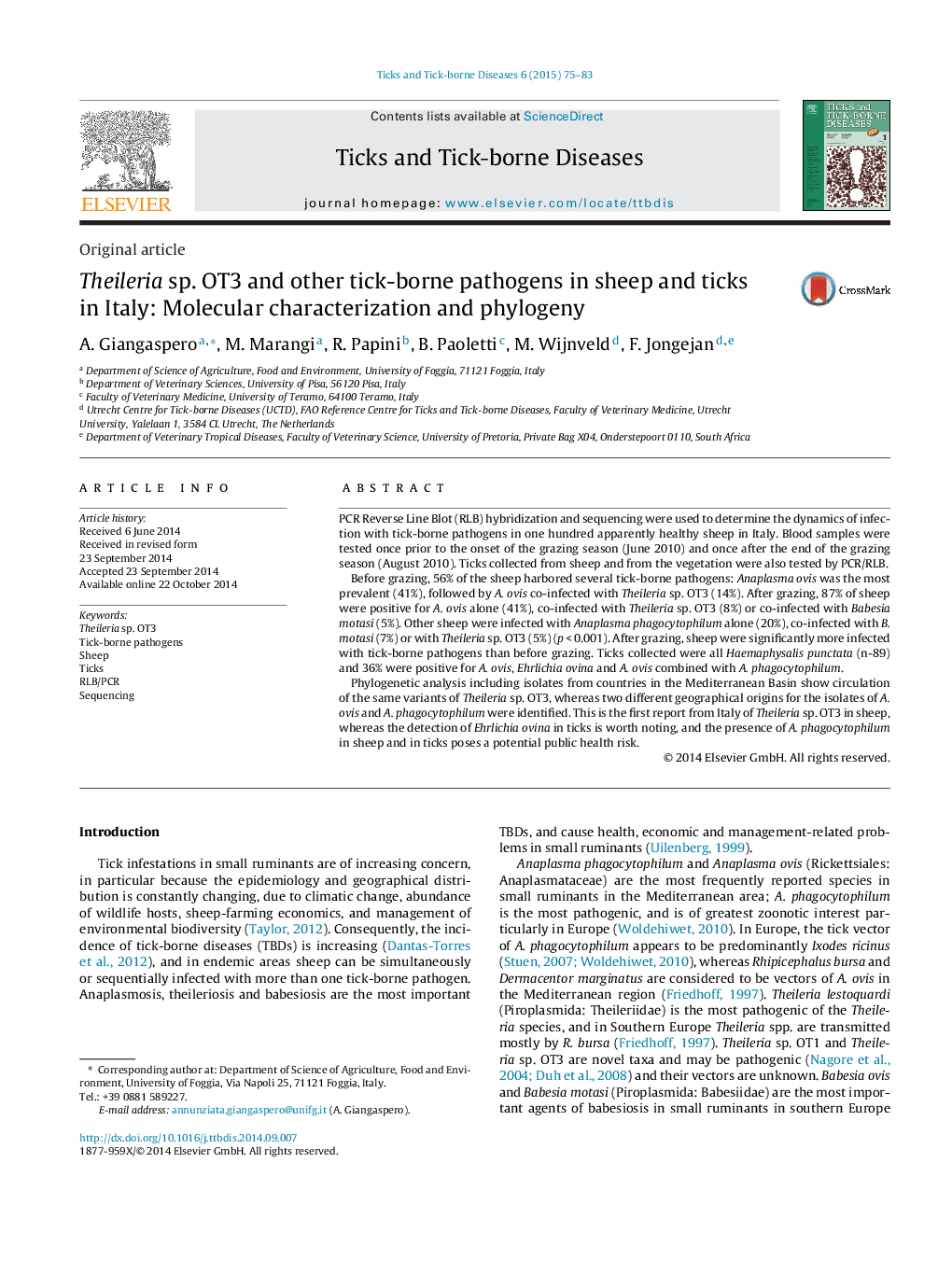| Article ID | Journal | Published Year | Pages | File Type |
|---|---|---|---|---|
| 2474029 | Ticks and Tick-borne Diseases | 2015 | 9 Pages |
PCR Reverse Line Blot (RLB) hybridization and sequencing were used to determine the dynamics of infection with tick-borne pathogens in one hundred apparently healthy sheep in Italy. Blood samples were tested once prior to the onset of the grazing season (June 2010) and once after the end of the grazing season (August 2010). Ticks collected from sheep and from the vegetation were also tested by PCR/RLB.Before grazing, 56% of the sheep harbored several tick-borne pathogens: Anaplasma ovis was the most prevalent (41%), followed by A. ovis co-infected with Theileria sp. OT3 (14%). After grazing, 87% of sheep were positive for A. ovis alone (41%), co-infected with Theileria sp. OT3 (8%) or co-infected with Babesia motasi (5%). Other sheep were infected with Anaplasma phagocytophilum alone (20%), co-infected with B. motasi (7%) or with Theileria sp. OT3 (5%) (p < 0.001). After grazing, sheep were significantly more infected with tick-borne pathogens than before grazing. Ticks collected were all Haemaphysalis punctata (n-89) and 36% were positive for A. ovis, Ehrlichia ovina and A. ovis combined with A. phagocytophilum.Phylogenetic analysis including isolates from countries in the Mediterranean Basin show circulation of the same variants of Theileria sp. OT3, whereas two different geographical origins for the isolates of A. ovis and A. phagocytophilum were identified. This is the first report from Italy of Theileria sp. OT3 in sheep, whereas the detection of Ehrlichia ovina in ticks is worth noting, and the presence of A. phagocytophilum in sheep and in ticks poses a potential public health risk.
